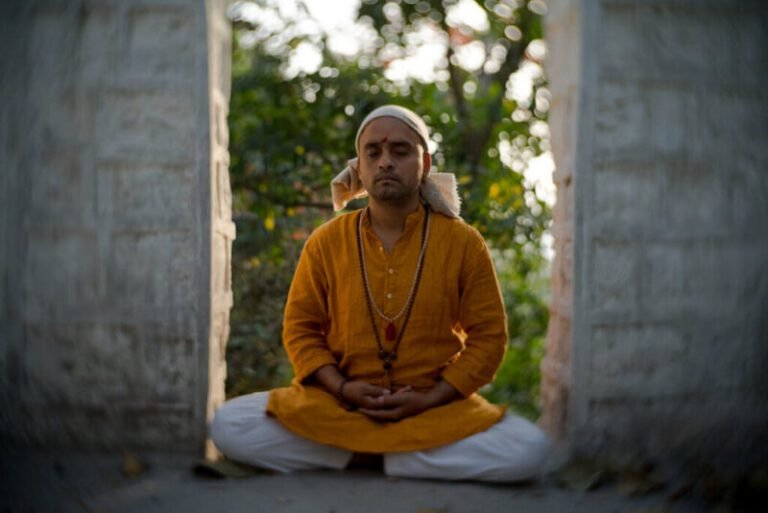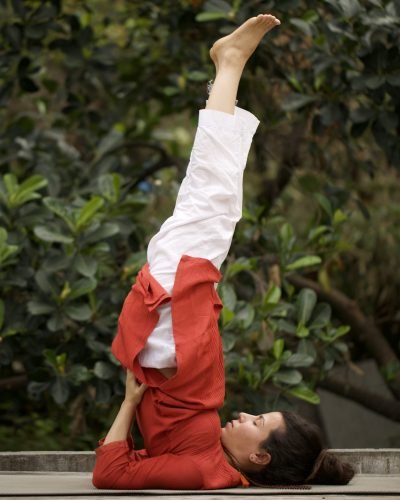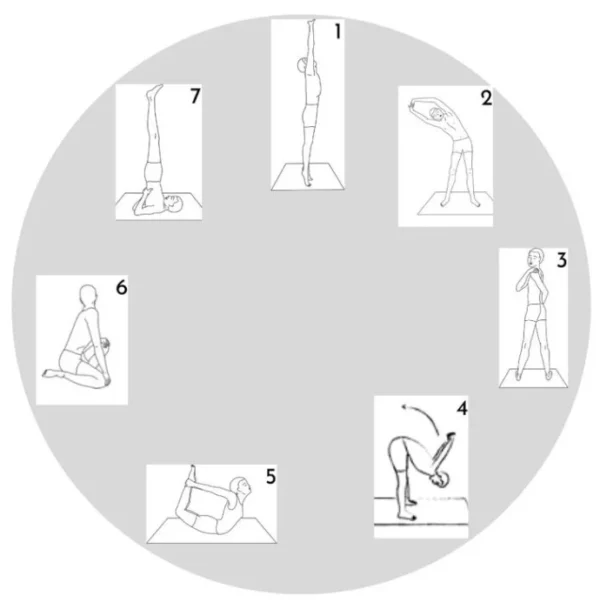Himalayan Tradition
Discover your inner power
Years of Mastery
Highly experienced teacher
Holistic approach
Yoga & ayurveda practices
Certified therapist
Authentic Ayurveda Kerala Cert.
The sequence of asanas described in this blog contains the 7 best yoga postures for a short daily complete yoga practice. These postures come from the ancient system of hatha yoga and are the best asanas if you want to practice for:
Pratyahara – withdrawing the senses for strengthening concentration
Pratyahara is the basis of all yoga practices. It involves grounding your awareness and developing the meditative faculty of your mind. Every posture in this particular sequence helps to develop pratyahara. When your practice contains pratyahara it means you are disciplining your five senses (sight, hearing smell, taste and touch); and when you discipline your senses you are disciplining your mind – helping your mind to become separated from the many thoughts that are dissipating your focus.

The concept of pratyahara is what we are missing in our current times, because practitioners are not aware that in the process of inner awakening they are bringing the conscious mind from outward to inward – towards the subconscious and unconscious mind; and eventually beyond the unconscious mind to the source of life – the atman, the soul. And while we may understand this concept intellectually, we also need to recognize that the moment you are disciplining the mind and senses (which is the conscious mind), your subconscious and unconscious mind comes forward and it starts to distract you. This disturbance is enough to stop most people’s motivation to continue refining their inner awareness, because it’s not pleasant to deal with such deep-rooted impressions of the mind.
The need for patience
For this process of inner development, you need to have some patience with yourself, and an understanding that whatever you are facing within you, is part of the process – and it will pass. You just have to remember that you should learn to be neutral between the positive and negative thoughts. Gradual mastery of pratyahara allows you to feel and redirect your flow of energy within; and that leads you to the state of dharana – pure concentration, which eventually brings you to the state of dhyana (meditation).

This is one cycle. Practice for a minimum of three cycles, gradually increasing to seven cycles. As your awareness becomes deeper, you can also increase the number of breaths from 5 to 7, 11, 15 and so on. Sarvangasana is the exception, where you are already holding for 11 or 21 breaths.
During the cycle there should be no force. You must be relaxed in each posture and build up an awareness of the body and breath, and adopt a meditative attitude.

You should remain as relaxed in each posture as if you were sitting for meditation – all you are doing is trying to be attentive, doing the best in each posture that your body will allow, without any force or tension. Engage your awareness on which organs, systems, and different parts of the body are being affected by each posture, from the toes to the head. The process is simply to develop the awareness through scanning the body – THAT is the purpose of maintaining the seven breaths.
It’s also important to maintain a rhythm when moving from one posture to another – here also, there should be no tension, no force. Work with the breath, and maintain your rhythm so that you feel your practice can flow.
At the end of your practice (according to your capacity), just stay steady and still, adopting a meditative awareness to the prana moving throughout the body, from the toes to head. In this process you don’t have to visualise anything – you just have to mentally FEEL the different parts of the body – and even if you can’t feel them, just maintain your awareness there.
At the beginning of the practice the focus is on the body and the breath: to FEEL the body, and FEEL the breath in the entrance of the nostrils. Notice where the breath is coming from – sometimes it comes from the diaphragm, sometimes the chest, and sometimes the abdomen – according to the posture.
Eventually, as you begin to refine your awareness to the breath and your focus becomes deeper, then you can engage the dharana – the concentration – to the different psychic centres (chakras) by mentally identifying which psychic centres are being affected by each posture.
Finally, you bring your awareness to the Third Eye in every posture. It’s OK if you are unable to do this in the beginning, just continue training your awareness to that place between the eyebrow centre.
Right after this practice, you can just lay on the spine if you have time, and watch your abdomen breathing – inhale and watch the abdomen rise, exhale and watch the abdomen drop back. Maintain this awareness for 7-11 breaths and then just see the body lying on the ground from the toes to the head. Then slowly turn to your right side and sit up. Close your practice by chanting the mantra AUM.
This practice is for those who have patience, and who are looking for a meditative access in their yoga, or seeking to develop stillness and inner focus. It is not for those who have a “Look at me!” attitude, but for those who want to look within. The practice is just a means so that your awareness can be trained, and your mind and body can be prepared for being redirected towards its source through developing inner focus.
This sequence is the best because:
All of these benefits will be experienced if you maintain the awareness – you engaging yourself in the practice, not just physically but also bringing the mind there by feeling the body, feeling the breath, and eventually the psychic centres.
There are many different sets of yoga practices, but here at the Vedic Yoga Centre Rishikesh we try to simplify the process so that you can bring your yoga into everyday living – then you can take the attitude of maintaining your awareness and meditative state from your mat into your daily activities. They are definitely going to give you physical, mental harmony to be spontaneous during your day and perform your duties and responsibilities attentively and efficiently.
You can also watch this YouTube video and practice with Shailendra as he demonstrates the practice and explains its significance.
The breath and sound are two vehicles through which your flow of awareness can be trained in the present
Shailendra Singh Negi
Enter your email below
© 2025 Vedic Yoga Trust®. All rights reserved.